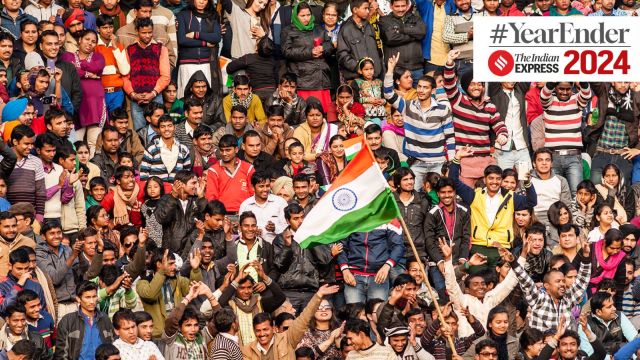While people around the world are raising concerns and facing challenges such as poverty, hunger, and climate change—issues that significantly impact their quality of life—India, known for its rich diversity and heritage, presents a complex and dynamic picture of a rapidly evolving society.

This year, India has overtaken China to become the most populous country in the world, with its population estimated at 1.4286 billion (142.86 crores).
According to a UNFPA report, if India’s population continues to grow at the current rate of just under one per cent annually, it is projected to double in the next 75 years.
Presently the fifth-largest economy in the world and fast-tracked to become the third-largest by 2030, India, despite impressive rankings on economic indexes this year, has ranked fairly low in the societal global indexes, revealing the stark contrast between the two.
Despite showcasing a slight improvement in the human development value to 0.644, which ranks it 134th globally, and a decrease of over 16.4 per cent in poverty in 2019-21, India is still one of the largest countries in terms of people living in poverty, estimated around 234 million, with a 0.105 MPI value.
As we approach 2025 soon, here’s a look at India’s performance and rankings in various global social indexes announced in 2024. From assessments of poverty to measures of happiness, here’s how India ranked.
Story continues below this ad
Where did India rank on global social-related indexes in 2024?
India’s performance across various social indexes this year presents a complex narrative of progress intertwined with persistent challenges; the following table summarizes India’s performance across key global societal indexes for 2024:
India’s rising ‘malnourished’ population
From previously categorised as “alarming” in 2000 with a score of 38.4 to ranking 105th position with a GHI score of 27.3, India has shown gradual improvement and is now categorised as “serious” in terms of hunger analysis.
However, there is still a long way to go as 13.7 per cent of India’s population still suffers from undernourishment and 35.5 per cent of children under the age of five are stunted.
Rapid degradation of the environment in India
 India will be a global hotspot for human-wildlife conflict by 2070, a report by Science Advances revealed. (Source: MoEF&CC)
India will be a global hotspot for human-wildlife conflict by 2070, a report by Science Advances revealed. (Source: MoEF&CC)
While the global energy transition has been slowing down, much slower than necessary in the past three years, India, a mega-diverse country with 7-8% of the world’s species, has been making significant strides in clean energy, ranking better in the Energy Transition Index 2024.
Story continues below this ad
However, it still is lagging, ranking 179th in the Nature Conservation Index, with a disappointing score of 45.5, and ranking 176th with 27.6 in the Environment Performance Index.
The status of standard of living in India:
India has been ranked 159th in the Press Freedom Index, which is an improvement of two ranks from last year; however, the country still falls behind in terms of overall human freedom ranking, being positioned 109th with an overall score of 6.06.
While economic participation and opportunities for women in India have seen a slight improvement, particularly in the political empowerment parameter, India has only closed 64.1 per cent of its gender gap in 2024, ranking 129th globally.
As a result, the Indian megacities of Delhi and Mumbai are tied for 141st place in the Global Liveability Index, with a score of 60.2 out of 100, leading to Indians relocating abroad, with the total number of overseas Indians worldwide being approximately 35.42 million today, according to India’s Ministry of Foreign Affairs.
Story continues below this ad
So, while India has made some progress in certain areas, significant challenges remain. Ongoing efforts to enhance press freedom, bridge gender gaps, and improve the overall livability of urban centres are essential for cultivating a more equitable and vibrant society in India.



 India will be a global hotspot for human-wildlife conflict by 2070, a report by Science Advances revealed. (Source: MoEF&CC)
India will be a global hotspot for human-wildlife conflict by 2070, a report by Science Advances revealed. (Source: MoEF&CC)





























